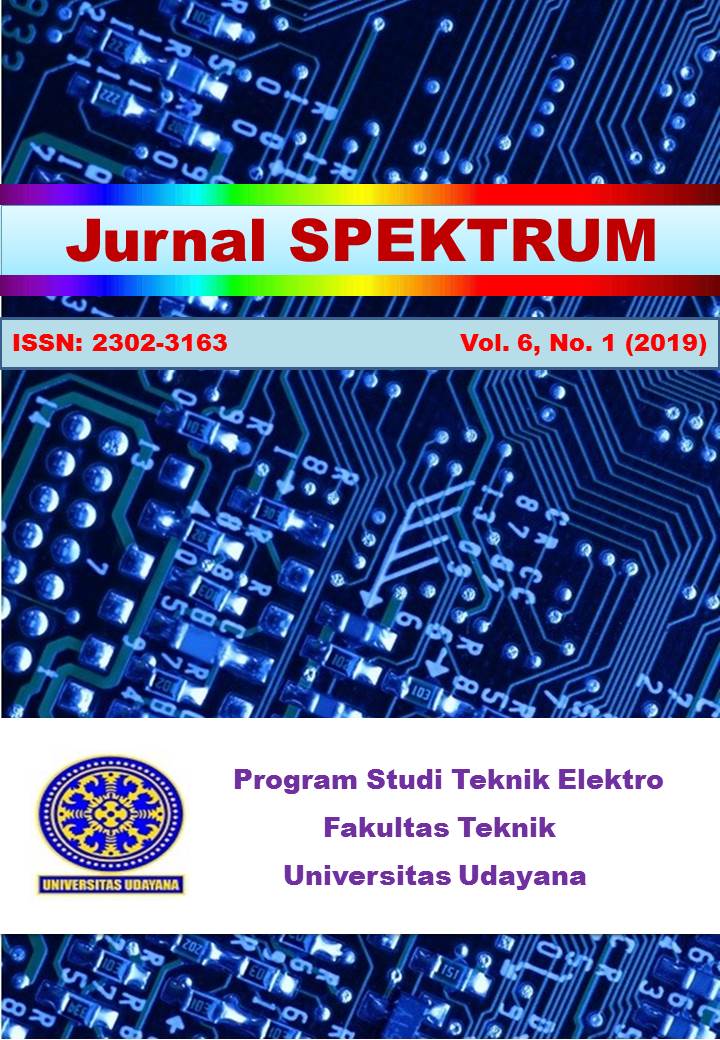Prototipe Penggerak Atap Kanopi Otomatis Menggunakan Sensor Cahaya, Sensor Hujan Dan Sensor Suhu Berbasis Mikrokontroler ATMega16
Abstract
Small house design, sometimes ignoring comfort factors such as air circulation and direct sunlight that can make humidity increase and higher temperature inside the house. Giving a controll system at the part of the house can make the air circulation better. In this paper, the prototype design of automatic roof canopy drive using a light sensor, rain sensor, and an ATMega16 microcontroller based temperature sensor is used to solve the problem. This prototype uses the programming language in BASCOM AVR software and PROTEUS software for circuit simulation. Light sensor in the form of LDR will detect changes in light intensity, that is when dark produces a voltage of 1.17V and logic 0 and when light produces a voltage of 4.30V and logic 1. Rain sensor is used to detect the presence of water in the event of rain, that is in conditions the rain produces a 1.83V voltage and logic 0, whereas in the absence of rain it produces a voltage of 4.70V and logic 1. The LM35 temperature sensor is used to detect temperature changes that occur, namely when temperatures less than 29ºC will logic 0 and when the temperature is over from 29ºC will logic 1. All conditions generated by the three sensors will be converted through the ADC so that it can provide logic input to the microcontroller to drive the servo motor to close or open the canopy roof.
Downloads

This work is licensed under a Creative Commons Attribution 4.0 International License.



